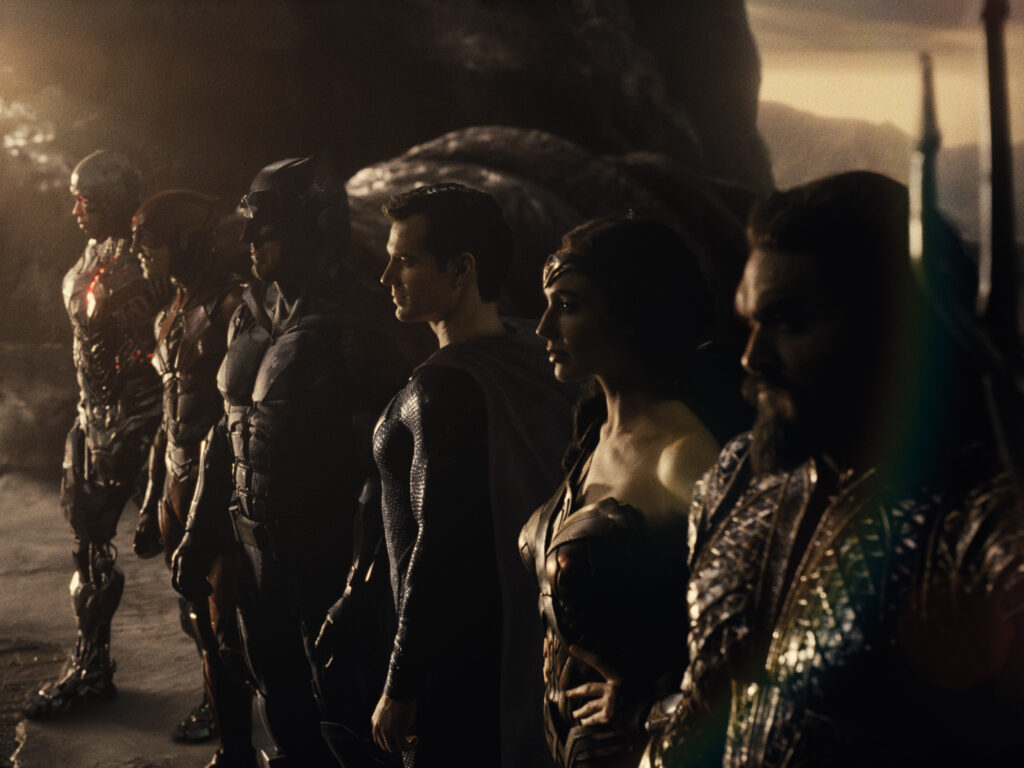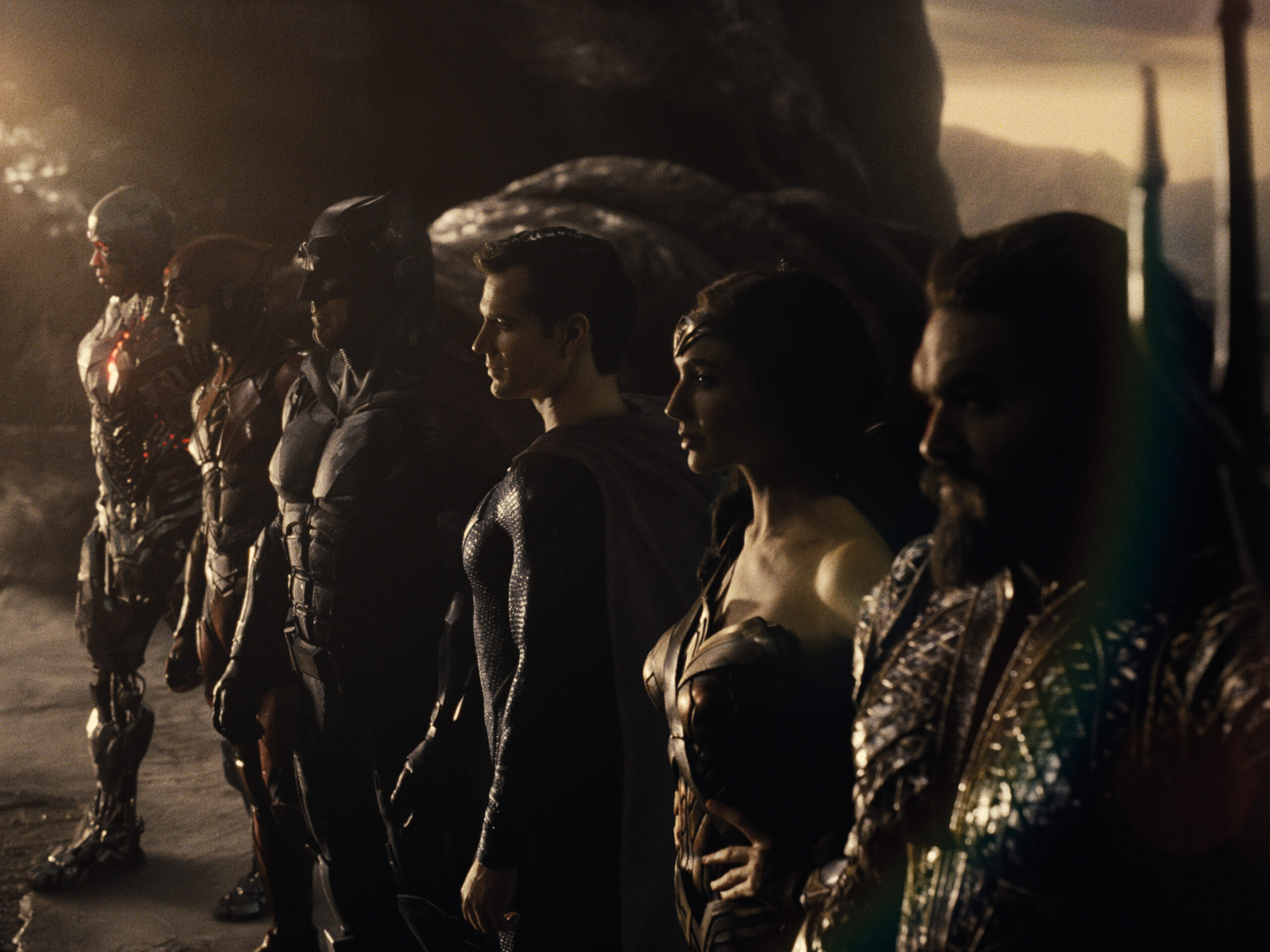First and foremost, Zack Snyder initially stepped away from Justice League due to an unthinkable family tragedy, and if you enjoyed this film, please consider a donation at afsp.org to help raise awareness for suicide prevention. #ForAutumn
By now, the history of the #ReleaseTheSnyderCut movement has been chronicled and written in history. After all, it’s been going on since 2017, and many people, myself included, were torn on it. Personally, I have always enjoyed Zack Snyder and his films. I adored the direction he brought DC Films in, with Man of Steel being a personal favorite comic book movie of mine. What Snyder was doing to superhero movies at the peak of the Marvel Cinematic Universe took guts and an immense dedication to the story he wanted to tell. Yet while highly debated among social media and critics, he doubled down on his vision. In an era where studios constantly hamper filmmakers in their quest for box office glory, Snyder felt like he was breaking away from the Marvel formula and bringing comic book movies to a wholly different universe, but to one that was equally welcoming. To be completely honest I never thought this day would come. It seems Snyder himself didn’t think this day would ever come. Yet here we are; After nearly four years of waiting, the Snyder Cut released, and it was absolutely glorious.
This film release should be a celebration of Snyder and his vision, so I won’t harp on the initial version of Justice League we received, aside from this: What we saw in 2017 is a travesty and a completely different film, or better yet, a completely different experience. The Snyder Cut feels like Snyder’s opus, a grand ode to the heroes he was building up in his previous films, while also setting the foundation for all that was to come next. His general outline for the next two films in the DC Universe are quite public now, and while those prospects coming to life in this film were exciting, they take a bit of a backseat; Because at the heart of this film, Snyder understood that nobody will really care about the fate of the universe if you can’t care about the six heroes fighting for it. Rather than rely solely on nostalgia through epic action sequences and humor, Snyder presents heroics in a way viewers haven’t really felt since Sam Raimi’s Spider-Man trilogy. Before they were superheroes, they were three-dimensional humans with their own lives and stories, and Snyder’s four-hour epic takes the time to take a look at each one on a personal and humanistic level.

Each hero gets a moment of genuine heroism, not just saving the world or fighting a super villain, but by simply helping out a passerby. It works exceptionally well when this treatment is used on the “relative” newcomers of Flash and Cyborg. If I’m being completely honest, this could really be a Cyborg movie on its own, because wow, Ray Fisher has so many standout moments that it’s hard to keep count. There are so many moments of his especially that just feel purely humanistic, and without spoiling anything, how he becomes the hero he’s meant to be is truly beautiful. It’s once again a brilliant showcase of how to paint a hero in anybody, super powered or not, and every moment of his makes a wonderful addition to the runtime. This film had me awestruck at times, not just because I was able to witness it, but because of how well it worked, a question that many wondered once officially announced.
At four hours, there’s certainly a whole lot of movie, and I don’t believe Snyder wasted any of it. Every time we pulled away from the path, it simply enriched the journey we were taking so much more. This is a heartfelt film at its core, and Snyder’s dedication to telling each story individually makes for a narrative that is much more compelling in every regard. He even gives the villainous Steppenwolf a genuine backstory rather than being used solely as the big bad. Plus, he got a redesign which looks absolutely badass so that’s an added bonus. Every time Darkseid is on screen, the inner fanboy in me can’t help but truly be awestruck at being able to witness Snyder’s vision.
Now, Snyder let it be known that this film was supposedly the middle chapter of his DC films, with Justice League 2 and Justice League 3 being set up here, primarily in the epilogue. Now, the epilogue works well on its own as a beautiful coda, but there’s a few scenes attached to the coda that leave me wondering what comes next. Snyder has said that this was it, but he also never thought the Snyder Cut would see the light of day. So, either these (insanely badass and enigmatic) sequences were left in as a possible opportunity for WB to do right by Snyder and cast/crew, or Snyder felt his complete vision should be seen regardless of outcome. If it’s the former, there won’t be a complaint out of me. If it’s the latter, I’m still glad we got to see this much, because what a wild ride it was. Snyder takes many liberties in his storytelling, and from hearing his outline on what was to come next, he certainly shoots for the moon more often than not. Nevertheless, the respect is there and it is most definitely earned. Rather than churn out a facsimile of the source material or a Marvel film, Snyder takes his films in a direction that works so well that I cannot fathom how the studio thought they had a better plan. Snyder deserves all his roses, because the Snyder Cut is a bonafide masterpiece.
Zack Snyder’s Justice League is streaming on HBO Max now.
